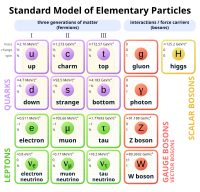
Photo from wikipedia
The effects of heavy particle-wall interaction on a cylindrical plasma source discharge are investigated, through hybrid particle-in-cell/fluid simulations. The bulk plasma is considered quasineutral with isothermal electrons, and with no… Click to show full abstract
The effects of heavy particle-wall interaction on a cylindrical plasma source discharge are investigated, through hybrid particle-in-cell/fluid simulations. The bulk plasma is considered quasineutral with isothermal electrons, and with no secondary electron emission from the walls. The neutral gas wall reflection model is shown to play a major role in determining the conditions for a self-sustained and stationary plasma discharge. A hysteresis cycle on the injection mass flow rate is found when neutrals deviate from a purely diffuse reflection at the walls, with the mass utilization efficiency changing up to 20% between purely specular and diffuse scenarios. However, as the ratio of ionization mean free path to macroscopic length is decreased, the neutral-wall reflection model becomes irrelevant. Finally, even small deviations from unity of the ion energy accommodation coefficient at the walls are seen to have a major impact on both the ion and neutral distribution functions, and ultimately the mass utilization efficiency. This behavior stresses out the importance of a precise experimental determination of this parameter for accurate simulations.
Journal Title: Plasma Sources Science and Technology
Year Published: 2021
Link to full text (if available)
Share on Social Media: Sign Up to like & get
recommendations!